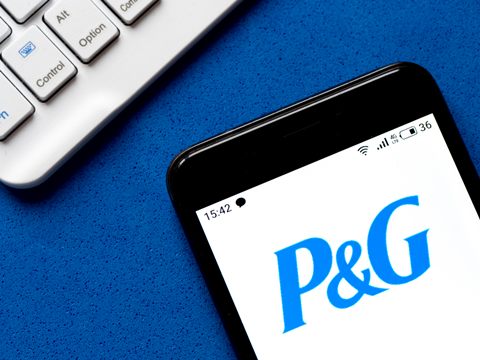
Aiming to reduce the environmental footprints of its own operations, its consumers, and the sectors it participates in, P&G has unveiled purification technology for recycled polypropylene, redesigned its packaging for various products, and more.
P&G is working to lower its own environmental footprint and those of the sectors in which it operates, as well as offer products that help consumers lower their own. One of its sector-wide efforts involves VersoVita – a process developed by its R&D teams to remove ‘nearly all’ imperfections from recycled polypropylene resin. In turn, this is set to restore the plastic to near-virgin quality and unlock further recycling and reuse.
Going forward, the company hopes to improve recycled resin quality, help meet increasing demand for high-quality recyclate, and reduce plastic waste by making VersoVita Circular Polymer Purification available license to plastic manufacturers worldwide.
In a bid to reduce its own footprint, P&G has adopted a ‘roll and squeeze’ bottle for its anti-dandruff BARE shampoo. Reportedly made with 45% less plastic per ml than the standard 370ml alternative, the bottle can be rolled up to access ‘every last drop’ of the product; it can then be disposed of via standard plastic recycling streams, where its new, compact shape is set to save more room for other household recyclables.
Meanwhile, its Tide evo laundry tile seeks to help consumers save their own energy, waste, and water. Instead of liquid detergent sold in a plastic bottle, the tile alternative comes in recyclable paper packaging and is made of ‘minuscule’ fibres weaved together into six layers of soap for use in lower-energy cold water washes. Apparently, production takes place in a facility powered by renewable energy.
According to P&G, its plastic packaging reduction efforts are informed by science and life cycle thinking, especially where that pertains to packaging design. It plans to keep increasing its implementation of recycled plastic, lightweighting its designs, and transitioning into paper, biobased plastics, and other renewable materials for its packaging.
Furthermore, it points to the waste management hierarchy as a driving factor behind its plans to reduce, reuse, and recycle as part of its material management process. In the company’s view, packaging can be considered recyclable if at-scale collection, sorting, and processing are all available, alongside end markets for the material and format in at least one geographical location. It excludes waste to energy and conversion to fuels in this definition.
By 2030, its goals are to halve its use of virgin petroleum plastic in consumer packaging per unit of production versus its 2017 baseline; and to design 100% of its consumer packaging for recycling or reuse. As of the 2022-2023 financial year, it claims that 78% of its consumer packaging is designed to be recyclable or reusable, and that it has lowered petroleum plastic consumption by 13%.
Compostable and biodegradable packaging are both left out of P&G’s packaging goals. This is due to limited consumer access to effective treatment facilities and, in their absence, the potential for the packaging to contaminate plastic recycling streams. Instead, it intends to achieve circularity through recycling and reuse.
Another facet of its sustainability goals is collaboration to drive impacts at scale. For instance, it has worked with the Alliance to End Plastic Waste and Circulate Capital Ocean Fund to help develop, and increase access to, adequate waste management infrastructure in global regions where this is lacking.
Other partnerships seek to drive plastic separation and recovery technology, which are expected to enhance both the quantity and quality of recycled plastics. So far, it has participated in the efforts of Holy Grail 2.0, The Recycling Partnership Film & Flexibles Coalition, The Recycling Partnership Polypropylene Recycling Coalition, PureCycle, and the Recycling Partnership Polyethylene Terephthalate (PET) Recycling Coalition.
Additionally, it identifies Extended Producer Responsibility (EPR) as a means of supporting ‘optimally designed’ recycling systems and pursuing a circular economy. P&G has backed the packaging EPR principles laid out in The Consumer Goods Forum’s “Building a Circular Economy for Packaging: A View from the Consumer Goods Industry on Optimal Extended Producer Responsibility”.
Turning its attention to consumers, P&G aspires to clearly labelled packaging. One of its methods is its adoption of the How 2 Recycle Label, a cross-industry platform designed to provide consumers with clear and harmonized recyclability information.
The company states that it will continue to share examples of its sustainability-minded progress throughout Earth Month in April.
In related news, we previously discussed packaging reduction with Amazon’s Kayla Fenton, global lead of the Ships in Product Packaging Programme. This initiative tests packages to see if they can be shipped in their original manufacturer’s packaging and seeks to cut down on unnecessary carboard boxes or paper bags in e-commerce deliveries.
If you liked this story, you might also enjoy:
Report: The ultimate guide to global plastic sustainability regulation
The Brief: Oxo-(bio)degradables: the who, what, and why of breaking down fossil-based plastics
Sustainable Packaging Summit: How Kraft-Heinz uses collaboration to drive innovation
The Brief: Using ocean-bound plastic in packaging – how, why and should we?


















No comments yet